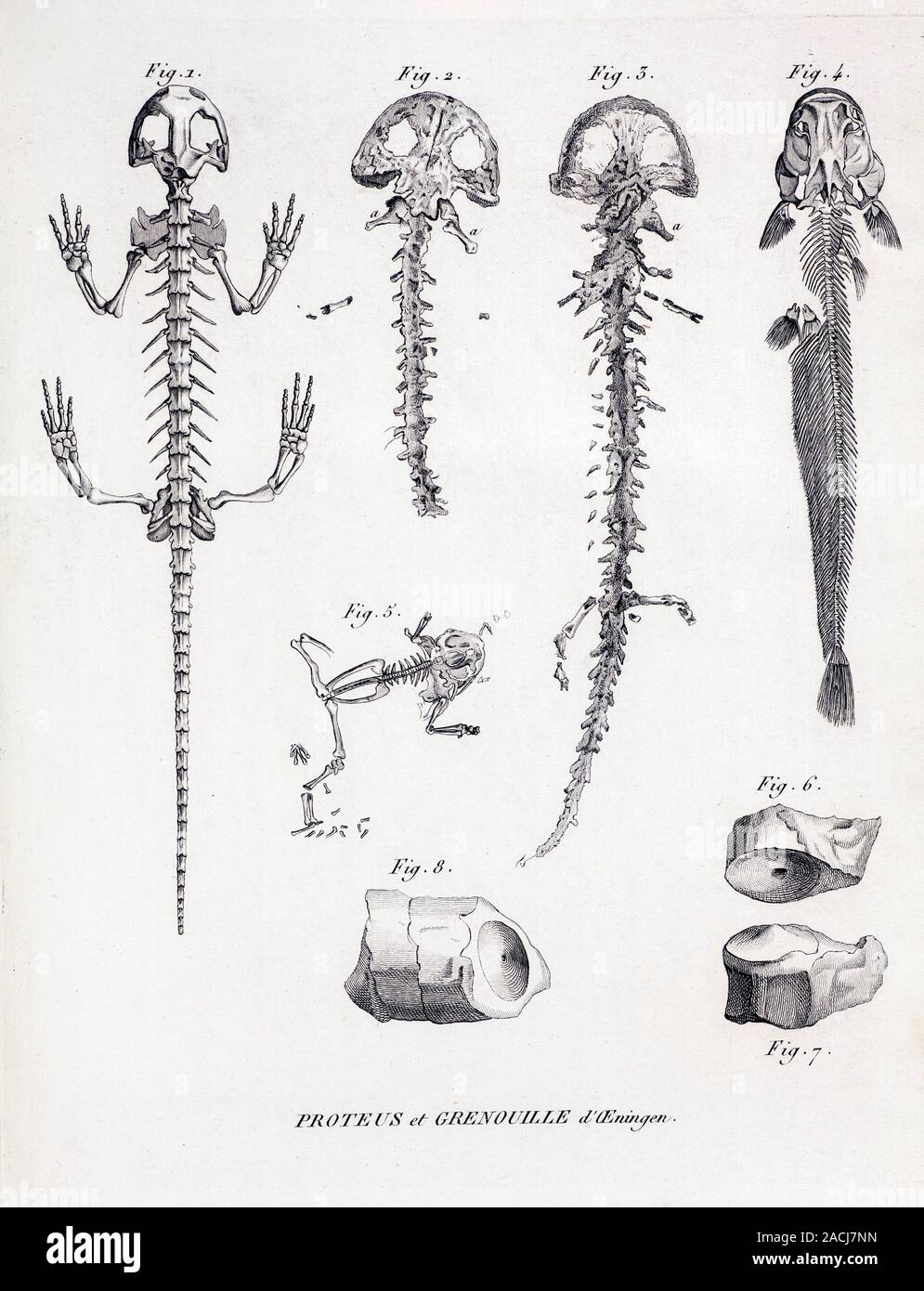Illustration in Vol. 4 of Cuvier's Ossamens Fossiles" 1812. In 1726 Scheuchzer illustrated Homo Diluvii testis as a fossil human victim of the flood

Image details
Contributor:
Science Photo Library / Alamy Stock PhotoImage ID:
2ACJ7NNFile size:
50.6 MB (2.4 MB Compressed download)Releases:
Model - no | Property - noDo I need a release?Dimensions:
3681 x 4809 px | 31.2 x 40.7 cm | 12.3 x 16 inches | 300dpiDate taken:
21 February 2011Photographer:
PAUL D STEWART/SCIENCE PHOTO LIBRARYMore information:
Illustration in Vol. 4 of Cuvier's Ossamens Fossiles" 1812. In 1726 Scheuchzer illustrated Homo Diluvii testis as a fossil human victim of the flood. In 1811 Baron Cuvier, who famously said "there are no human fossils", took a look at the specimen. His work revealed more of the limbs and many obviously non-human features. He identified it correctly as a giant Salamander close to proteus. There are many accounts of this incident but few note that Cuvier cites two different specimens (here Fig 2 is Scheuchzer's, but Fig 3 is different and more complete specimen of Dr. Amman of Zurich). The current genus name Andrias was coined in 1837. Hence the current scientific name Andrias (image of man) scheuchzeri. There is a living member of the genus A. davidianus, the Japanese giant salamander. Cuvier also showed Scheuchzer's illustrated 'human vertebrae" (Fig. 6&7) belong to a fossil crocodile."